Art & Exhibitions
From an Elliptical Piano to a Renaissance Altarpiece—Rare Treasures Abound at New York’s Winter Show
The theme this year is Americana.
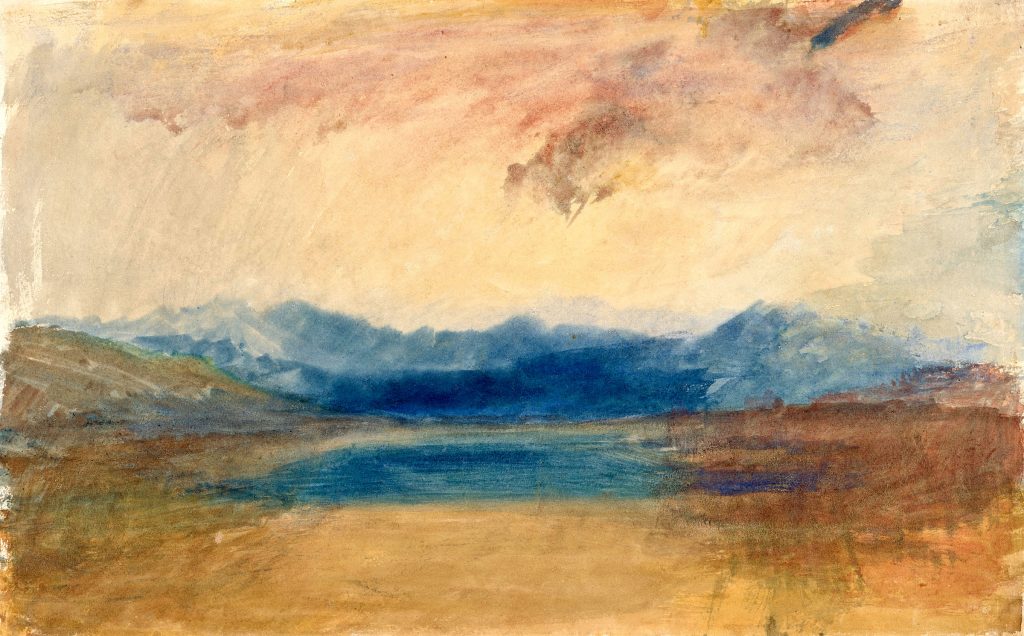
The Winter Show has again returned to the vaulted vastness of the Park Avenue Armory, on New York’s Upper East Side, to delight and dazzle spectators—professional and otherwise—with a plethora of curious art and design objects stretching back centuries. While they hail from all corners of the world, the theme this year is Americana.
Now in its 70th year, the show has corralled more than 70 international exhibitors. Newbies include Jill Newhouse Gallery (New York), which presents 19th- and 20th-century European paintings, Peter Harrington (London), showcasing rare books and manuscripts, and Galerie Léage (Paris), which—sharing a booth with Carolle Thibaut-Pomerantz—has brought exceptional 18th-century furniture, like a pair of Louis XV gilt-wood armchairs.
With so much to see at the Winter Show—which benefits the East Side House Settlement in the Bronx, as it always has—we’ve put together this primer with all the treasures that leapt out at us as we perused the aisles and spoke with exhibitors during a preview.
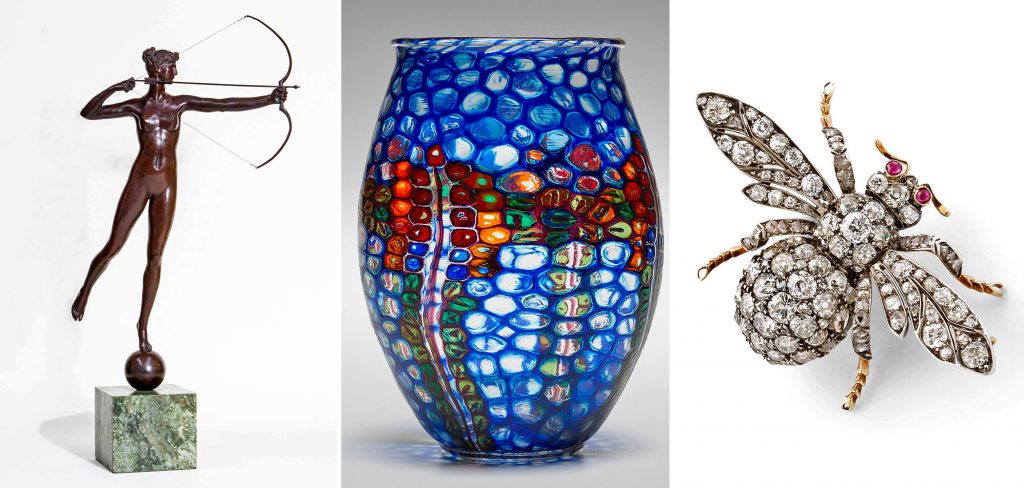
Augustus Saint-Gaudens’s Diana of the Tower (1899), azure vase by the studio of Artisti Barovier (1924–25), and a diamond bee brooch from A La Vieille Russie.
A sensational azure vase (1924–25) by the studio of Artisti Barovier at Glass Past begged a touch, though we dared not. Augustus Saint-Gaudens’s Diana of the Tower (1899) at Lillian Nassau, originally designed as a gilt bronze weathervane for Madison Square Garden’s tower, would have been very busy had it been placed outside on this frigidly windy day. Contemporary woodworker Michael Coffey’s elaborately carved partition, brought by Maison Gerard, stands sentry near the front, beautifying the bag check line. A stucco Buddha head dating from the 3rd to 4th century, found at Tambaran’s booth, is a sight to behold. And the New York gallery A La Vieille Russie’s 10-karat diamond bumble bee brooch (ca. 1870), complete with ruby eyes, is deserving of all the buzz it gets.
Now on to the booths…
Bernard Goldberg
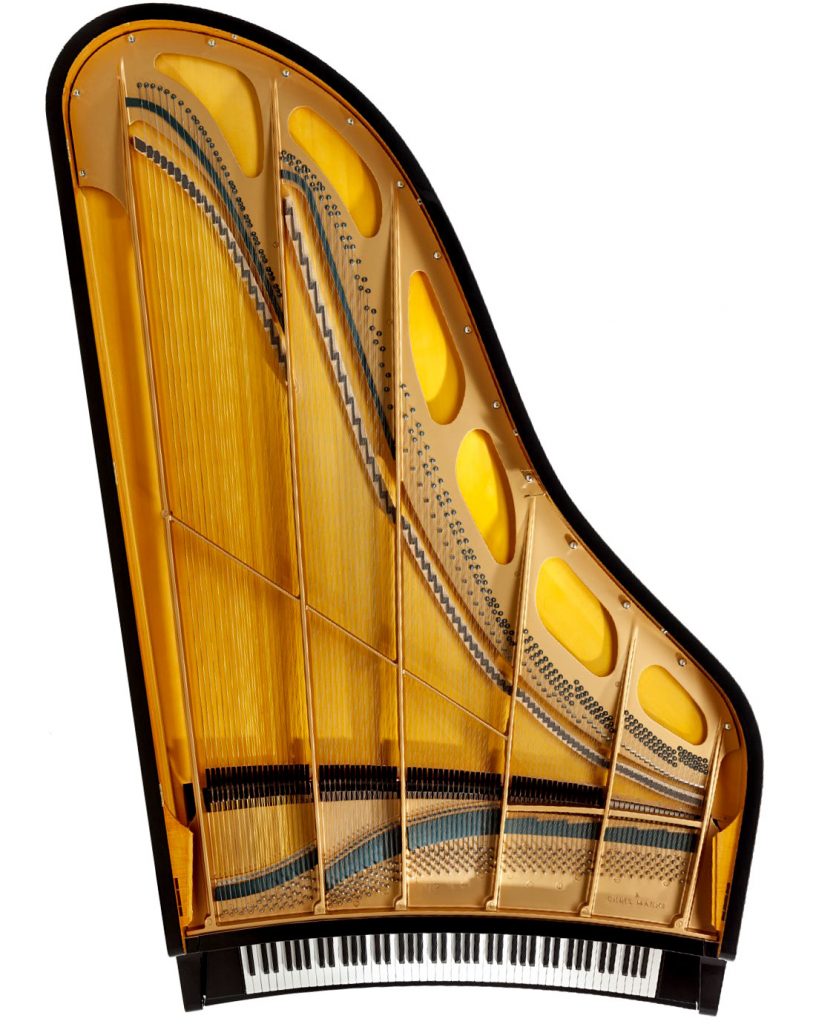
The Maene-Viñoly concert grand piano. Asking price: $525,000, with all proceeds going to the Viñoly Foundation. Courtesy of Bernard Goldman.
There’s so much to absorb chez Bernard Goldberg, a Winter Show stalwart, that it’s hard to know where to begin. One obvious contender is the statement-making centerpiece of the booth, a sumptuously elliptical grand piano—note the ergonomically curved keys—that juts out into the front entrance of the fair. It’s one of only two made by the Uruguayan architect Rafael Viñoly (who designed the residential skyscraper at 432 Park Avenue) along with instrument maker Chris Maene. Non-architectural works by architects are the theme here. Don’t miss a cypress-wood Frank Lloyd Wright chair (ca. 1940s) from his C. Leigh Stevens House in South Carolina; a Jacques Lipchitz bronze sculpture, Standing Figure (1916), with the artist’s thumbprint on the base (a limestone version can be found at the Guggenheim Museum); and a laidback bench by I.M. Pei that once sat in the lobby of Dallas’s City Hall, a concrete 1970s brutalist structure that the architect also designed.
Robert Simon
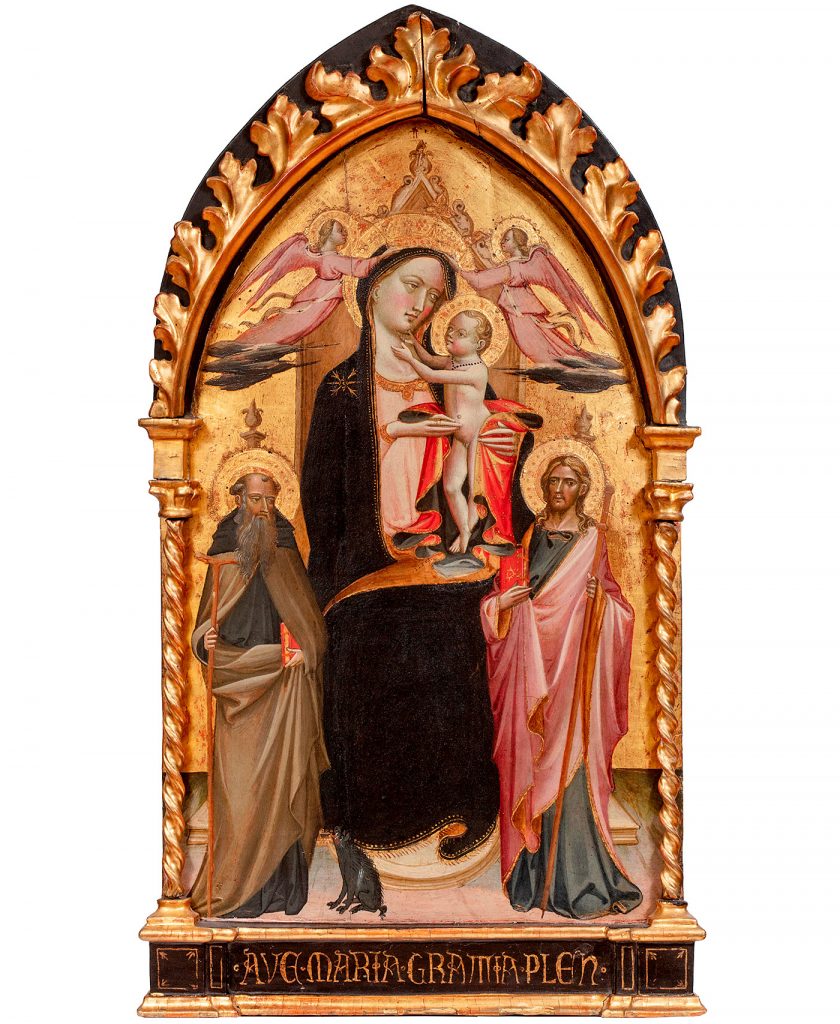
Giovanni dal Ponte, Madonna and Child Enthroned with Saint Anthony Abbott (ca. 1420). Asking price: $500,000. Courtesy of Robert Simon
Over at Robert Simon, the gallery has installed an exquisite altarpiece by Giovanni dal Ponte, Madonna and Child Enthroned with Saint Anthony Abbott (ca. 1420). It is in splendid condition, retaining its brilliant hues, including its original gilding. As Simon explained, other works of the late Gothic and early Renaissance periods in Florence were repainted with layers after layer of gold leafing. It’s always a treat to see Renaissance works on U.S shores, so don’t miss the opportunity. This piece has only been exhibited three times, all of them in Florence, most recently at the Galleria dell’Accademia in 2017.
Joan B. Mirviss
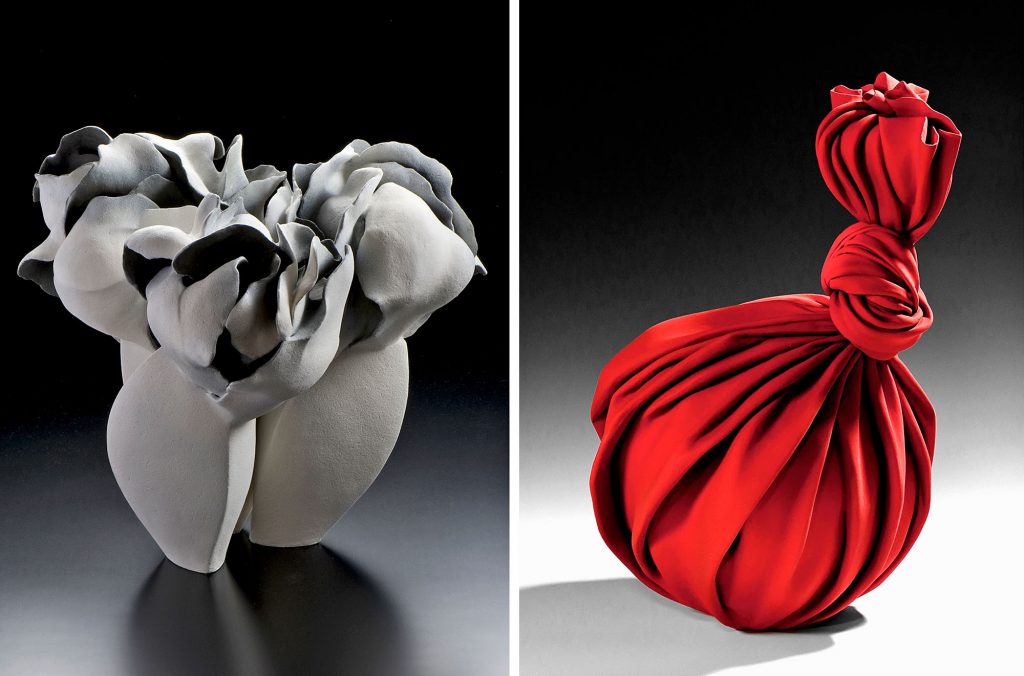
Left: Fujino Sachiko, Imagery ’23-1 (2023). Right: red ceramic sculpture (2023) resembling a knotted wrapping cloth by Tanaka Yū. Courtesy of Joan B. Mirviss.
This eye-catching booth from Joan B. Mirviss—an American dealer and scholar on the au courant topic of Japanese ceramics—looks at the modern and contemporary clay art of 20 female Japanese artists spanning three generations. These women, according to the gallery, “overcame social and cultural barriers to express both eloquence and strength.” Especially eloquent are Fujino Sachiko’s Imagery ’23-1 (2023) and Tanaka Yū’s red trompe l’oeil glazed stoneware sculpture (2023) resembling a knotted wrapping cloth. Anyone interested in this genre should check out “Radical Clay: Contemporary Japanese Women Artists,” currently on view at the Art Institute of Chicago, featuring works by many of the same artists.
Peter Harrington
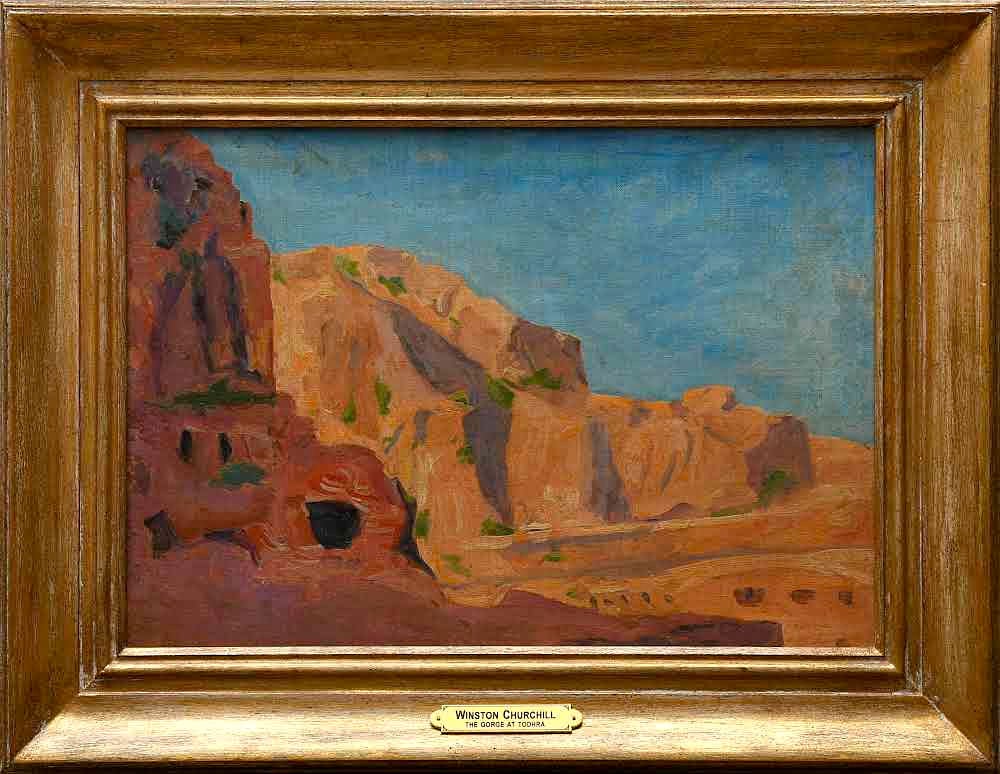
Winston Churchill, The Entrance to the Gorge at Todhra, Morocco (1935–36). Courtesy of Peter Harrington.
Pom Harrington, owner of the London-based rare-book seller Peter Harrington (his father), beamed when describing his remarkable selection of objects belonging to Winston Churchill. They hail from the collection of Steve Forbes, who famously auctioned off a stash of Churchill memorabilia in 2010 at a Christie’s sale which just so happened to be attended by Angelina Jolie and Brad Pitt. This new trove includes books and letters that Churchill, Britain’s wartime prime minister, either wrote or read, often inscribed to important people in his life, such as his military mentor Ian Hamilton. Among the literary treasures, however, another prize stands out: the artwork The Entrance to the Gorge at Todhra, Morocco, which Churchill himself painted in 1935–36. He was a keen artist, first taking up the brush in 1915 as a form of art therapy and continuing until his death. Heavier still is a hulking wood desk, part of his private office in his Hyde Park Gate home and used while writing his memoirs.
Daniel Blau
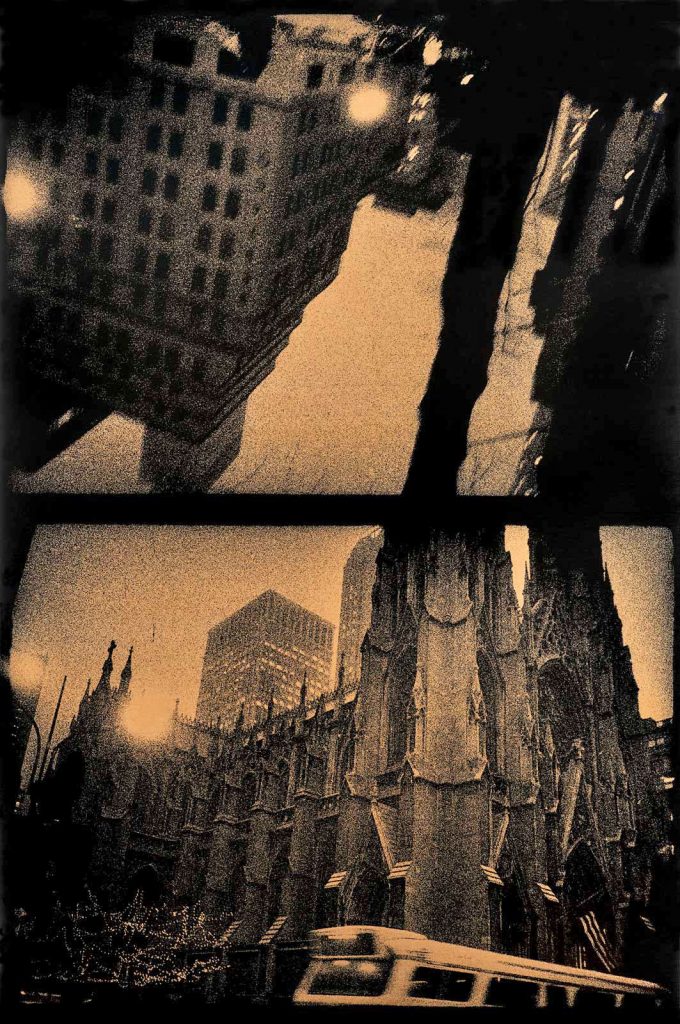
Daido Moriyama, n.t. (From 71NY) (1971), silkscreen. Asking price for each of ten prints: $42,000. ©Daido Moriyama Photo Foundation.
In 1971, for one month, the veteran Japanese street photographer Daido Moriyama left the familiar environs of the Shinjuku district of Tokyo for the similarly gritty streets of New York. And he took pictures, lots of pictures, of what he saw. Last year he found a series of negatives from the trip and screen-printed them at large scale. Each of them is a double image, capturing a somber nostalgia for 1970s New York. “My favorite city,” he told his gallery Daniel Blau, “is New York. I have no doubt that I like it even more than Tokyo. Somewhere hidden in it is a strange kindness and sadness. Sometimes, when I want to remember the person I love, I think of the lights of New York.” The lights he captured, with their bronze glow, embody the Japanese concepts of are, bure, bokeh—meaning grainy, blurred, and out-of-focus. Little wonder he cites Seiryū Inoue, Shōmei Tōmatsu, Eikoh Hosoe, Shūji Terayama, and even William Klein and Andy Warhol as influences.
Peter Finer
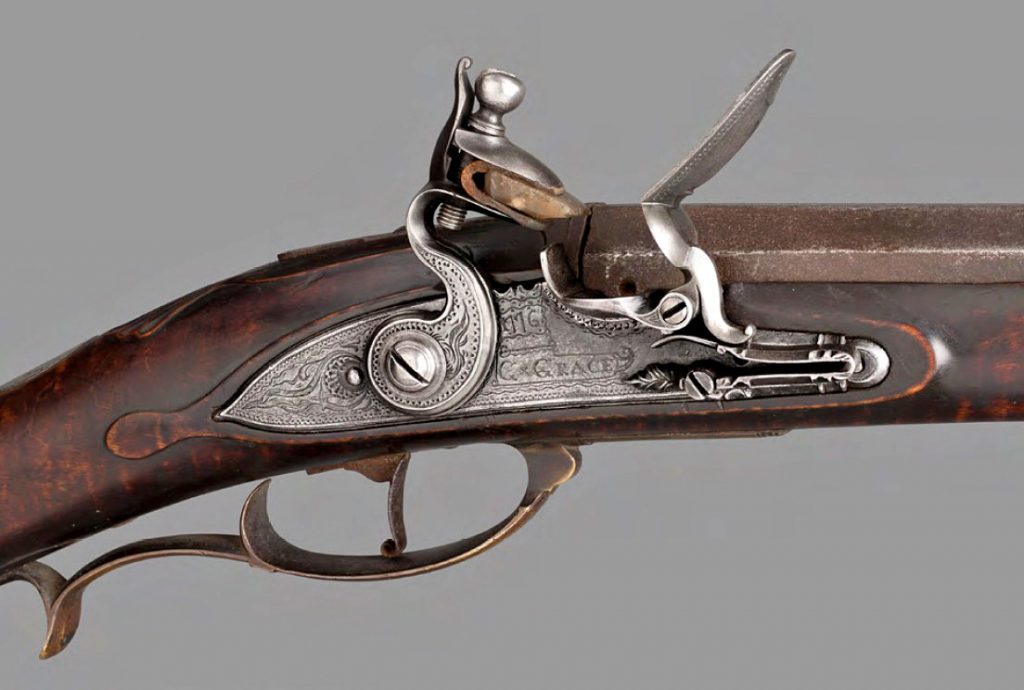
Kentucky rifle by George Grace. Asking price: “In excess of half a million dollars.” Courtesy of Peter Finer.
Specialists in antique arms and armor from around the world, with a London gallery on historic Duke Street, Peter Finer was especially keen to talk about an American rifle. Not just any American rifle, but an elegant Kentucky long-rifle made in the year the colonies formed a union, 1776. It is an ornate, distinctly long-barreled piece made by gunsmith George Grace in Pennsylvania. Unfortunately for its owner, Captain Alex Dick, an advertisement appeared in the Virginia Gazette in Williamsburg on July 26 of that year, stating it was “stolen from my company of marines at Hobb’s Hole, maker’s name Grace.” The newspaper clip went to say that whoever returned the rifle “shall have a dollar reward.” It’s unknown if that dollar was ever proffered, but it’s noteworthy that this edition of the Virginia Gazette published the Declaration of Independence.
The Winter Show is on view at Park Avenue Armory, 643 Park Ave, New York, January 19–28.





